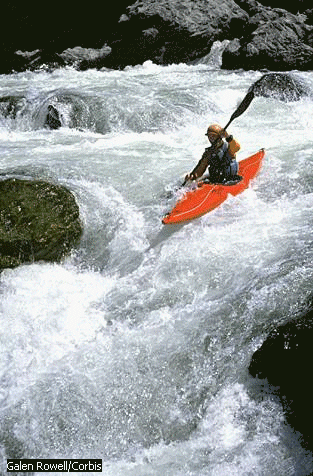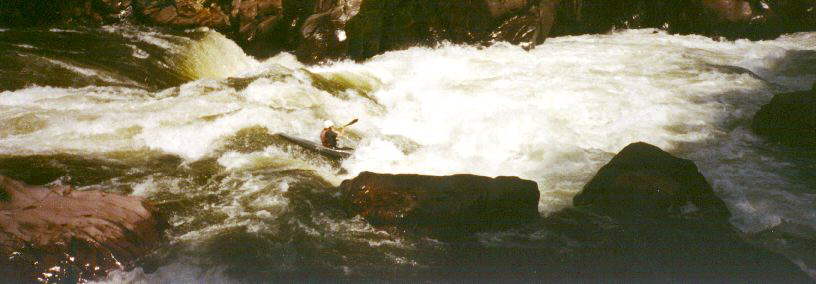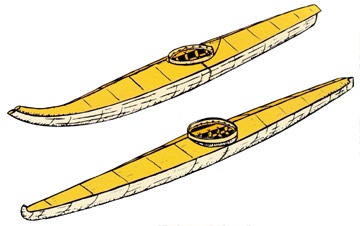History of the Kayak

Return to the Physics of Kayaking homepage.
|
The materials that have been used to make a kayak have changed significantly with the years. Many early kayaks used wooden frames covered in skin for their materials. However, with the ship's adoption by European settlers, they were covered in fabric. This method continued until the 1950's when fiberglass was introduced, and then in 1984, the first plastic kayak was made. At present, kayaks are sturdy, light, and very versatile.

The modern interest in canoeing and kayaking as a recreation and sport was brought about by John MacGregor, who designed the Rob Roy in 1845, a canoe he based off sketchings of Inuit canoes and kayaks. MacGregor later formed the Canoe Club in 1866 with other canoe and kayak enthusiasts, and they brought about competitive canoeing with their first regatta in 1873. Kayaking became a part of the Olympics in 1936, with the introduction of four events, the single and pairs 1,000 meter and 10,000 meter race. Later, the white-water race and slalom events were added to the Olympics also. Return to the The Physics of Kayaking homepage.
[
Sign my Guestbook] - [Read my Guestbook
] |
